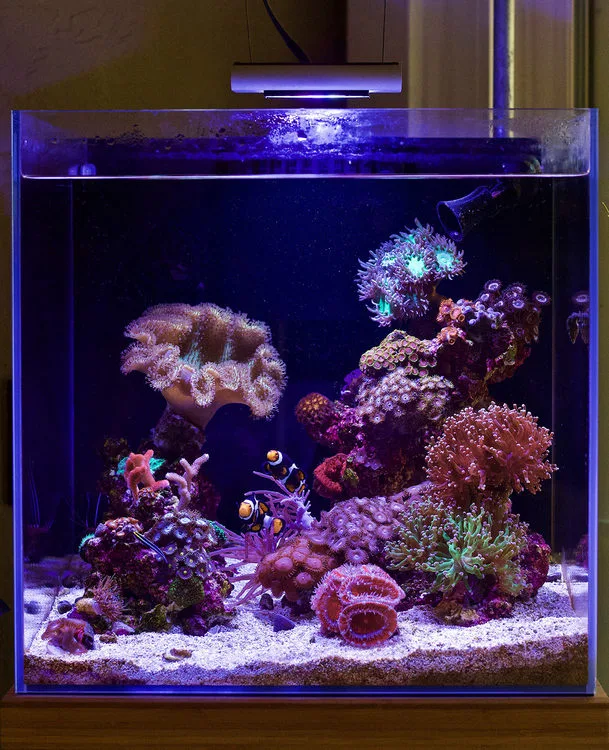Stunning 17-Gallon Reef Tank – Justind823's TOTM | NanoReef

Tank Specifications
Volume: 17 Gallons / 64 Liters
Dimensions (L × W × H):
12.0" ×
12.0" ×
12.0"
30.5cm ×
30.5cm ×
30.5cm
Equipment List
- Salt: CaribSea
Frequently Asked Questions
How often should I test the water parameters in my reef tank?
For optimal health, it's advisable to test the alkalinity at least once a week. Regular testing allows you to catch any fluctuations in water chemistry early. In addition to alkalinity, also consider testing for calcium, salinity, and pH regularly.
What is the recommended water change schedule for a nano reef?
Initially, you should aim to change about 10-15% of the tank water weekly. For a 17-gallon nano reef like mine, that translates to around 2 gallons. As the tank matures, you can adjust this frequency; I now do water changes every two weeks.
What is the best way to feed frozen foods to my reef tank inhabitants?
Use a tea ball infuser to strain your frozen food. Place a cube inside, then let it defrost in a cup of RODI water. After it's thawed, open the infuser and dump the food into the tank to minimize waste.
What precautions should I take before introducing new corals into my reef tank?
Always dip your corals in a pest treatment solution before adding them to your tank. This step ensures that any potential pests are eliminated and helps prevent infestations that can harm your existing coral.
How do I monitor the well-being of my tank's inhabitants?
Pay close attention to the behaviors and conditions of your fish and corals. Stress signs can include unusual swimming patterns, lack of feeding, or changes in color. Regular observation allows you to catch potential disasters early.
How can I maintain a low-maintenance reef tank?
Automate as many processes as possible. Use auto feeders for regular feeding schedules, consider an auto top-off system to keep salinity stable, and use a good quality controller for monitoring water parameters. Keeping a tank journal to track measurements and maintenance can also help.
What are the advantages of using a pull-out sump for tank maintenance?
A pull-out display sump allows for easier access for cleaning and maintenance. This design improves the ease with which you can reach all sections of the sump. It's also beneficial for troubleshooting any plumbing issues without having to disassemble your entire setup.